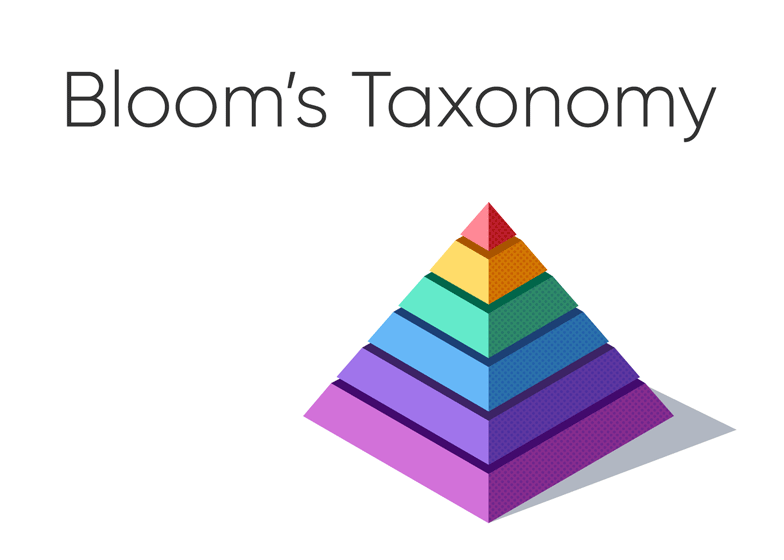4 Cognitive Learning Strategies To Help You Learn
I dive into some learning theory to help you to understand how we process information and how different ways of teaching and learning can impact how quickly and effectively you learn.
Think back to the last time you learned something. Was there a concept or subject that just clicked for you? You understood it clearly, and it made sense. Now, think about a time at school when you couldn’t understand a concept or subject no matter how hard you tried.
-4.png)
What is Cognitive Learning Theory?
Cognitive Learning Theory explains how we process information when we learn. When we think back to our school days, many of us will remember a teacher stood at the top of the classroom lecturing us on a subject. Almost every teacher used this method for almost every subject. And in the vast majority of cases, a student’s success was measured by how much they could remember on exam day. This was true for me in medical school where I'd just sit passively in a huge lecture hall with 300 other bored students trying to figure out what I needed to remember and how to learn.
This type of teaching and learning, where the learner is mostly passive, sitting down and listening, while the active participant – the teacher – imparts their knowledge is linked to something called the Behaviorist Learning Theory. Which focuses on the idea that all behaviors are learned through interaction with the environment. This theory looks at how we, as learners, respond to an external stimulus and goes all the way back to Pavlov's original doggo-based experiment where he condition a dog to learn through association with rewards and punishment.
Now while the idea of getting treats is fun Cognitive Learning Theory, on the other hand, suggests that the learner is a much more active participant in the learning process than simply responding to a stimuli. They come to the table with their own skills, knowledge, memories and relevant information they’ve learned in the past. When learning something new, individuals process and construct their own understanding of a topic based on their past experiences and knowledge. As you'll remember from my videos other videos on how to learn this was one of the key principles of interleaving and understanding concepts rather than just memorising facts.
Cognitive Learning Strategies
To fully understand this theory, let’s look at four strategies which shape the concept of cognitive learning. I'll also show how these theories, or learning strategies, can be implemented into any learning environment whether for your own learning and studying or if you are teaching others.
Learner-centered approach
Learning is cumulative and relative to each individual. When we’re learning, we start with a baseline of knowledge and go from there. Jean Piaget, a Swiss psychologist and pioneer of Cognitive Learning Theory, favored this learner-centered approach to teaching. He suggested that accommodation, assimilation, and equilibration are all crucial to learning:
- Accommodation is how we modify what we already know to take new information into account;
- Assimilation is how the new knowledge is arranged in our heads alongside what we already know;
- Equilibration is the balance between what we already know and what we’re currently mastering.
For Piaget, learning is the process of relating new information to what we already know. Each new point or concept that’s introduced should build on the knowledge already acquired and learning materials should be divided into appropriate stages and taught in a logical order. If you are learning a new concept such as from a lecture, online course or a new skill it's important that you break up concepts with defined learning outcomes and structure learning into an order that gradually builds from your baseline of existing knowledge. In addition it's important to take stock of what you already know and actively try to understand new information in relation to existing ideas. Reading around new topics is key here and if you are teaching others creating a safe environment where learners can ask questions that are personalised to their baseline knowledge will aid understanding.
-4.png)
Bloom’s taxonomy
The next strategy is Bloom's taxonomy. Bloom’s taxonomy, is named after educational psychologist Benjamin Bloom, and describes six different levels of cognitive learning in the form of a hierarchy. At its most basic level, the taxonomy describes the essential abilities needed to recall information that has been taught. While at the highest level it describes a learner’s ability to take what has been taught, analyze it and use it to create and evaluate.

What are the six levels of Bloom’s taxonomy?
From bottom to top the hierarchies are:
- Remembering is knowing the facts, being able to recall information and the ability to describe what has been learned
- Understanding is the ability to interpret the information that has been learned in order to present, summarize or paraphrase it
- Applying is taking what has been learned and using it to solve a related problem or complete a task
- Analyzing is a deeper level of understanding; organizing, comparing, and deconstructing the relationship between different aspects of the material
- Evaluating is the ability to judge the information and critique it to choose a specific course of action
- Creating is generating new ideas or ways of looking at things and inventing, constructing, producing, or designing new things
When learning or teaching you should consider the depth of cognitive learning you need to achieve from a given subject or course.
- For example, if you’re learning basic steps in a new skill or entry level topics for an exam, it’s likely that remembering, understanding and applying the information provided is sufficient to pass an exam which focuses on recalling facts.
- If you’re training to be a doctor or nurse and need to learn about leadership and making critical team-based decisions, the level of cognitive learning needed must be deeper – important clinical decisions will require analysis, evaluative and creative skills that come later in the taxonomy.
When you are learning or teaching Bloom's Taxonomy is a helpful resource for thinking about how well you actually know a subject or topic. In previous videos I've talked about the power of teaching others to help you to learn concepts more deeply and creating teaching materials or questions whether for yourself or for teaching others helps you to logically order your understanding of a topic and to put the concepts into your own words which helps you to truly understand what you have learned.
Learning through discovery
The next strategy is learning through discovery and spiral learning. Active learner involvement is a core feature of cognitive learning. Jerome Bruner, a psychologist who studied cognitive learning in children, suggested that instead of simply feeding students information, we should allow them to discover it for themselves.
Bruner built on Piaget’s work and he believed that ensuring learners had a conceptual understanding of the topic was more important than the acquisition of information. Interaction is a core component here and part of what Bruner called the Spiral Process, previously learned material is reviewed frequently even as new material is being introduced. Spiral learning is a teaching method based on the premise that a student learns more about a subject each time the topic is reviewed or encountered. The idea is that each time a student encounters the topic, the student expands their knowledge or improves their skill level.
This ensures that a topic is fully understood. In a learning environment, Bruner’s interpretation of Cognitive Learning Theory can be put in place by:
- Giving learners opportunities to complete meaningful tasks to solidify learning, for example, role-playing communication scenarios or spoken language sessions
- Or asking learners to solve real-world challenges with the onus on the learner to work things out
For learners this is really about using active recall to go over existing topics and using spacing to leave time between study sessions such that you are returning to concepts to help consolidate your understanding.
Creating meaningful experiences for your learners
The next strategy is about creating meaningful learning experiences. David Ausubel, an American psychologist and advocate of cognitive learning, believed that for learning to be effective and permanent, it had to be meaningful. He made a clear distinction between meaningful learning and rote learning, where the material is learned as a series of facts in isolation. Or simply learned off by heart and no deliberate attempt is made to demonstrate its value or relevance to the learner. He believed that relatable material, which fitted in closely with what the learner already knew, was meaningful and therefore effective. Utilization of meaningful learning may trigger further learning, as the relation of a concept to a real-world situation may be encouraging to the learner. It may encourage the learner to understand the information presented and will assist with active learning techniques to aid understanding.
When teachers make a marked effort to show why a lesson is meaningful for the learner, there’s a significantly higher chance of it becoming anchored in the brain alongside what’s already known. Ausubel suggested that advance organizers are an effective way of doing this. This means that before diving into a complex topic, teachers and learners should cover some introductory material or offer some background to the topic. When learners have the relevant background knowledge, it’s easier for them to ‘slot in’ new information. For you as a learner or teacher, this means:
- New information should be sequenced carefully so that this knowledge builds on what the learner already fully understands
- Prefacing new material with introductory or background information is important
- and teachers should emphasize how each element of the session is meaningful to the job or task the learner is being prepared for.
Supporting cognitive learning within your organization
When designing the content for your next learning session or teaching program, bear in mind that individuals relate to materials in different ways. You can give each participant the best shot at success by:
- Sequencing your course content carefully
- Reviewing material you’ve already covered regularly
- Allowing learners the opportunity to play an active part in their own learning
- And emphasizing why the material is meaningful and how it relates back to their success.
As a learner you can look at your lecture notes or course materials and think whether these four things are true or whether you need to further organise yourself. You can also use tools like Bloom's Taxonomy to assess your own understanding of a topic and see if you truly understand.
-4.png)


